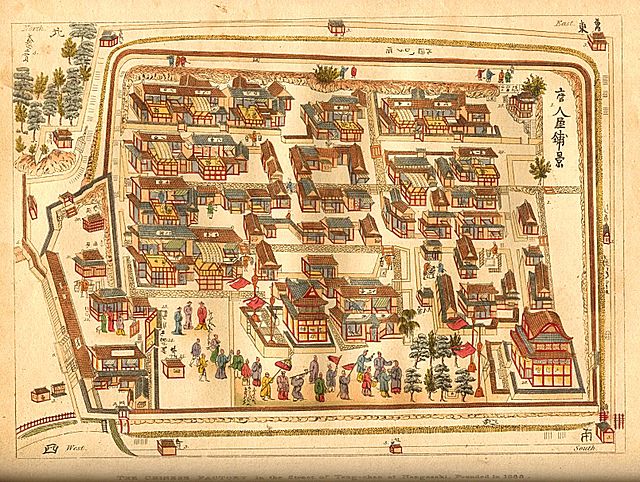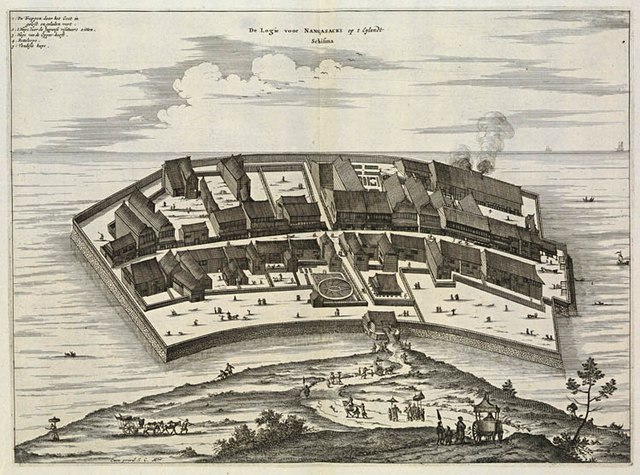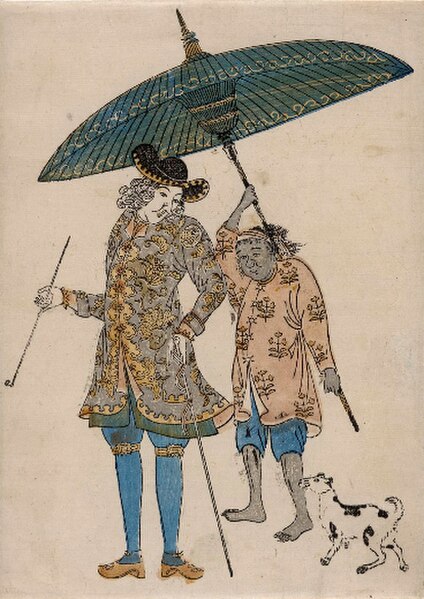Nagasaki bugyō (長崎奉行) were officials of the Tokugawa shogunate in Edo period Japan. Appointments to this prominent office were usually fudai daimyōs, but this was amongst the senior administrative posts open to those who were not daimyōs. Conventional interpretations have construed these Japanese titles as "commissioner", "overseer" or "governor".
A bird's-eye view of Nagasaki harbor as published in the Illustrated London News (March 23, 1853). In the center – the fan-shape of the Dutch traders' Dejima island compound and the Chinese compound is shown just to the left, separated from each other by narrow stretch of water. Bakufu supervision of these foreigners was under the control of the Nagasaki bugyō.
The Chinese traders at Nagasaki were confined to a walled compound (Tōjin yashiki) which was located in the same vicinity as Dejima island; and the activities of the Chinese, though less strictly controlled than the Dutch, were closely monitored by the Nagasaki bugyō.

Edo-era boundaries of Dejima island (outlined in red) within the modern city of Nagasaki. What happened on this tiny piece of land became the central focus of attention for each of the serial Nagasaki bugyō. The post-Pacific War city enveloped and surrounded the former island; and a portion of the former island was demolished to widen the riverside transportation artery at the top of the picture. This photograph is taken from a sign posted at Dejima in 2004, showing the reconstruction work as Dutch-era buildings were in the process of being recreated one-by-one based upon old pictures and models. This revival of interest in Dejima re-animates the need to know more about the Nagasaki administrators -- their work, their problems, their lives.
Nagasaki , officially known as Nagasaki City, is the capital and the largest city of the Nagasaki Prefecture on the island of Kyushu in Japan.
From top to bottom, left to right: Ōura Cathedral, Nakashima River, Glover Garden, Nagasaki Kunchi, Nagasaki Shinchi Chinatown, Nagasaki Peace Park
The Chinese traders at Nagasaki were confined to a walled compound (Tōjin yashiki), circa 1688
Dejima was an artificial island in Nagasaki Bay; its fan shape was easily recognizable. The trading post consisted mainly of warehouses and dwelling houses (1669 engraving).
A Dutchman with his slave at Dejima (18th-century painting by unknown artist, British Museum collection)






